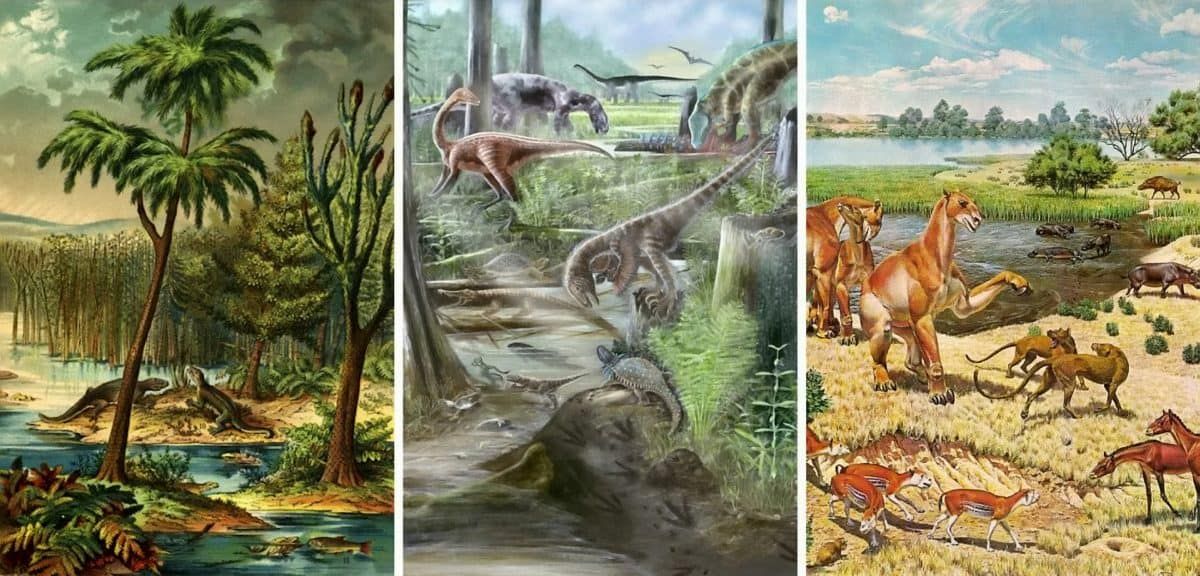
Biodiversity has remained constant since the boom in life following the extinction of the dinosaurs 60 million years ago, new research suggests.
The finding based on computer analysis of 200 years of paleontological records from 30,000 fossil sites around the globe contradicts conventional scientific thinking that biodiversity increases unchecked over time.
It will shed light on understanding the effects of alarming falling rates of biodiversity seen across the world today.
Researchers at University of Birmingham found the average numbers of land vertebrate species across different ecosystems had not increased for tens of millions of years.
Their results suggest the creation of new species and extinction rates on land find a natural equilibrium that last tens of millions of years.
These equilibria are maintained in the absence of major geological events such as the extinction of the dinosaurs – which saw biodiversity treble compared to pre-extinction levels largely due to the success of mammals.
Lead study author Dr Roger Close, of the University of Birmingham’s School of Geography, Earth and Environmental Sciences, said: “Scientists often think that species diversity has been increasing unchecked over millions of years, and that diversity is much greater today than it was in the distant past.
“Our research shows that numbers of species within terrestrial communities are limited over long timescales, which contradicts the results of many experiments in modern ecological communities – now we need to understand why.
“Contrary to what you might expect, the largest increase in diversity within land vertebrate communities came after the mass extinction that wiped out the dinosaurs, 66 million years ago, at the end of the Cretaceous period.
“Within just a few million years, local diversity had increased to two or three times that of pre-extinction levels – driven primarily by the spectacular success of modern mammals.”
The study, which involved an international team of collaborators, found the number of species within ecological communities on land had increased only sporadically through geological time.
Rapid increases in diversity were followed by plateaus lasting tens of millions of years.
Many scientists have argued that diversity increased steadily through geological time, which would mean that it would be much greater today than tens of millions of years ago.
Building an accurate picture of how land diversity was assembled is challenging because the fossil record generally becomes less complete further back in time.
But the researchers used advances in computing techniques to analyse 100,000s of fossils to find patterns that challenged the orthodoxy.
Professor Richard Butler, who was also part of the research team, said: “Our work provides an example of the combined power of the fossil record and modern statistical approaches to answer major questions about the origins of modern biodiversity.
“By understanding how biodiversity has changed in the past, we may be able to better understand the likely long-term impact of the current biodiversity crisis”.
The researchers, who included other institutions in the UK, USA and Australia, were able to study fossil data collected by palaeontologists over the past 200 years at around 30,000 different fossil sites around the globe.
The team focused on data from land vertebrates dating back to the very earliest appearance of this group nearly 400 million years ago.
They found that the average number of species within ecological communities of land vertebrates have not increased for tens of millions of years.
Their results, published in Nature Ecology & Evolution, suggest that interactions between species, including competition for food and space, will limit the overall number of species that can co-exist.
One reason why diversity within ecological communities does not increase unchecked on long timescales could be because resources used by species, such as food and space, are finite.
Competition for these resources may prevent new species invading ecosystems and lead to a balance between rates of speciation and extinction.
After the origins of major groups of animals, or large-scale ecological disruptions like mass extinctions, though, increases in diversity may happen abruptly – on geological, if not human timescales – and are again followed by long periods where no increases occur.
By Berny Torre